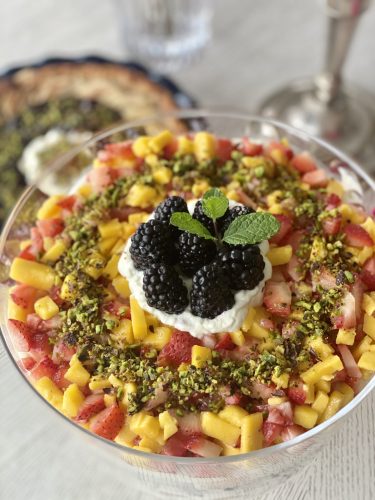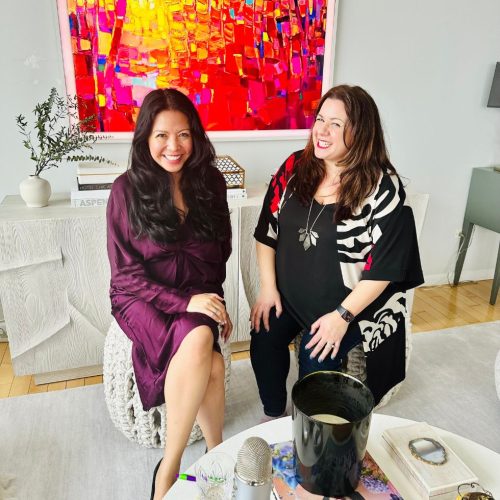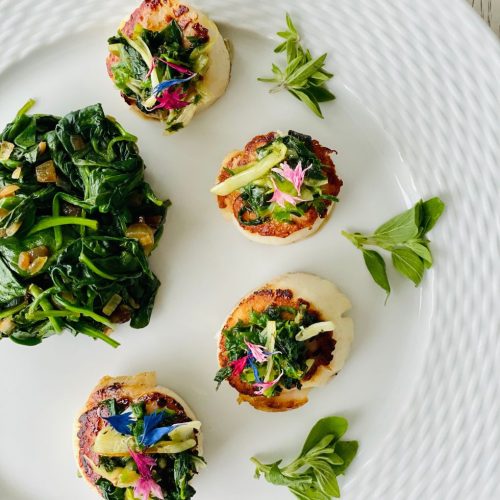No, Georgia did not secede from the US. We’re talking about Georgia the country — the food and hospitality mecca where Europe and Asia meet. Let’s call it Eurasia for today’s geography lesson. And while you may not be able to pronounce their treasured dish of khinklushkebi, you definitely need these Georgian dumplings in your life.
Dumplings 101
On a recent trip to Georgia (once again, the country, not the peach state), I took a master class at nouveau Georgian restaurant Chveni. Normally, I am all over the details of any trip I plan, but for this one, I had to rely on the tour company. Ironically, Chveni wasn’t on my original itinerary; it was a last-minute scramble to fill in a cooking class for me. But sometimes, the universe aligns, and I met exactly who I should have for my Georgian experience. The moment I walked into Chveni, I felt like I was in the East Village of New York City. The open-air garden is the center of the restaurant, and the crowd is Tbilisi cool. The translation of “chveni” into English is “our.” The sense of home and community are noticeable from the moment you arrive, as its name implies. The lovely restaurant staff took me back to a private room with an open kitchen. Relics from 1,000+ years casually hang out in the modern yet rustic space. I knew I was in for something special.
The Master Class
My guides for the afternoon were Pedro, a Portuguese import to Tbilisi, and Chef Iveri. The restaurant is owned by Chef Guram, who is known as the Gordon Ramsay of Georgia, which means he’s even more terrifying. But somehow the universe aligned and we just vibed. Chef Guram has the most extraordinary tattoos; on the outside of his arm is a samurai warrior, and on the other side a geisha. That pretty much describes him: unrelenting perfectionist and warrior on the outside, and kind, genuine and dare I say total sweetheart on the inside.
Welcome to the Georgian Feast
I’m not even going to try to pronounce anything I made, or pretend I can make anything nearly as well as Chef Iveri or Chef Guram can. To give you some context, we made khachapuri, khinklushkebi and elarji. You know, simple stuff. But seriously, while these are basic tenets of Georgian cooking — bread cheese, dumplings and a local polenta — we took it to the next level. I’m not a Georgian grandmother, so it will take a lifetime to perfect these recipes; however, I will say that I now have the tools and techniques to attempt to make traditional Georgian cuisine.
The Georgian Dumpling
Khinklushkebi is a beloved dish that is made in almost every Georgian home. From now on, among friends, let’s call it the “Georgian dumpling,” as it’s near possible to pronounce. I had more than one conversation with various Georgians about how to make the perfect dumpling. It starts with the ingredients and goes all the way to the art of making the optimal dumpling shape. Chef Iveri from Chveni also took it next-level, enveloping the traditional meat version with a cognac cream peppercorn sauce. (You could drink that sauce like soup.) Here are a few tips we got from Chef Guram himself:
- The dough is very important for achieving the light-as-air effect. It should be thin but strong enough to hold the filling.
- Control your filling; if you overstuff the Georgian dumpling, it will not cook properly.
- To make the Georgian dumpling is an art, but one that can be perfected through practice. When forming the dumpling, you first create an S shape, then pinch. You work your way around this S shape with a pinch method until you’re ready to close up your dumpling. For a mini dumpling, you’ll have about 20 pinches.
- Cut off extra dough at the top of your dumpling, as it won’t cook anyway when you drop it into boiling water.

















































